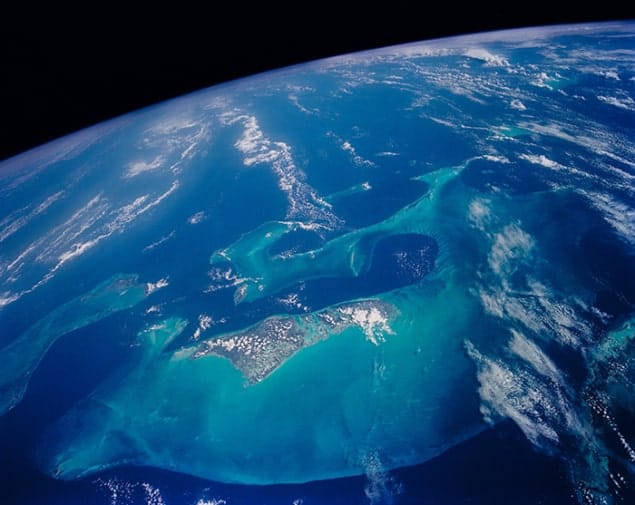
Most of the water that sustains life on Earth probably came from asteroids rather than comets. That is the conclusion of scientists working on the Rosetta space mission, who have measured the levels of hydrogen isotopes in the comet 67P/Churyumov–Gerasimenko. The ratio of deuterium to hydrogen in the comet is much greater than the ratio found on Earth, which suggests that comets supplied Earth with only a small fraction of its water.
Although water blankets 71% of the Earth’s surface, its abundance puzzles scientists. The Earth formed with the other planets in a disc of gas and dust around the newborn Sun. This protoplanetary disc was hot close to the Sun and cold far away. Because the Earth is close to the Sun, it formed in a hot region that should have been fairly dry.
So how did the Earth get its water? Comets had once seemed to be a promising source: they come from the solar system’s frozen outer reaches and harbour ice that vaporizes when they approach the Sun. If comets struck he Earth after its formation, they could have delivered the water that makes up the oceans and our bodies. If this happened, water on comets should have the same isotope composition as water here on Earth. In particular, comets should have the same ratio of deuterium to hydrogen as found on Earth.
Halley’s fluke
In 1986 scientists got a chance to determine the origin of terrestrial water when the best known comet of all – Halley’s Comet – approached the Earth. Surprisingly, the comet’s deuterium to hydrogen ratio was twice the terrestrial ratio. Rather than abandon an attractive theory, however, many scientists dismissed the Halley result as a fluke.
But then in 1996 and 1997, two other bright comets lit up the sky as they passed near to Earth: Hyakutake and Hale–Bopp. Both also had twice the terrestrial deuterium to hydrogen ratio, providing even more evidence that comets did not give the Earth most of its water.
But there was still hope for the comet model. All three comets – Halley, Hyakutake and Hale–Bopp – originated in the Oort cloud, a reservoir of comets far beyond the orbit of Pluto. But some comets come from the Edgeworth–Kuiper belt, which is just past Neptune’s orbit and whose largest members are Pluto and Eris, the latter discovered in 2005. Comets from this reservoir might have terrestrial deuterium levels, but these are usually faint and hard to observe.
In 2010 astronomers succeeded in detecting deuterium in a comet from the Edgeworth–Kuiper belt. Unlike the other comets, this one, named Hartley 2, had a deuterium level matching terrestrial water, reviving the idea that comets delivered water to the Earth.
Just a nice story
“It was a nice story, wasn’t it?” says Kathrin Altwegg, a Rosetta scientist at the University of Bern in Switzerland. “Now with our finding, I guess this idea is going to disappear again.”
In August, and to great fanfare, the European Space Agency’s Rosetta spacecraft arrived at an Edgeworth–Kuiper comet named 67P/Churyumov–Gerasimenko (see “Rosetta rendezvous with comet at long last”).
Today, Altwegg’s team reports that this comet also has high levels of deuterium. In fact, the level is even higher than Halley’s Comet, coming in at 3.4 times the terrestrial level – making it the largest deuterium to hydrogen ratio ever seen in a comet.
Jumbled understanding
“It’s surprisingly high,” says Paul Weissman of the Jet Propulsion Laboratory in Pasadena, California, a Rosetta scientist who was not involved with the new work. “This somewhat jumbles trying to understand where the Earth’s water came from.” Still, Weissman is less ready than Altwegg to assert that comets contributed only a tiny amount of water to the Earth.
At the very least, the finding means that Edgeworth–Kuiper comets span a range of deuterium ratios. Altwegg says that most terrestrial water likely arose from asteroids that hit the Earth. By studying meteorites – most of which come from asteroids – scientists know that asteroids have terrestrial deuterium levels. The Earth was also born with some water as well. Of course, asteroid impacts can be deadly – just ask a dinosaur – but if asteroids did indeed give us most of our water, we might not exist without them.
The research is described in Science.
- There is much more about the Rosetta mission in this feature article by its project scientist Matt Taylor: “Rendezvous with a comet”



